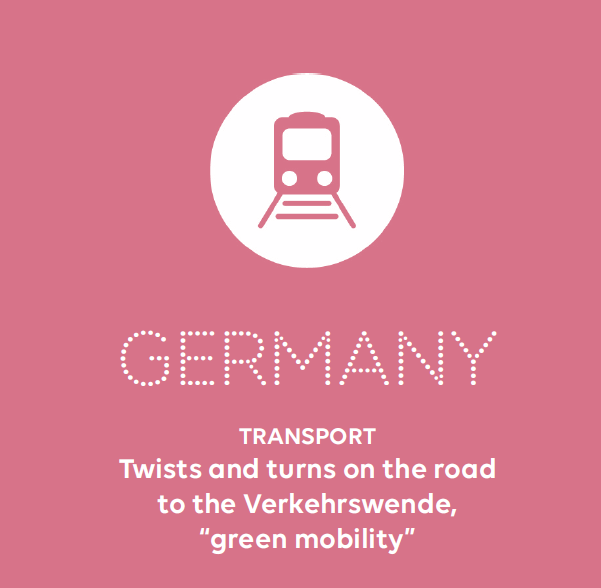Germany • Twists and turns on the road to the Verkehrswende
Compared to the progress made in the Energy Transition (Energiewende), greenhouse gas (GHG) emissions from transport have been on the rise since 2010 making the transition to green mobility (Verkehrswende) uncertain.

Table of contents
- Transport: the black sheep of German GHG emissions
- Insufficient national policy for reaching European targets
- A disproportionate weight between automotive and logistics in the economy
- Cities and länder: laboratories of innovation
Key takeaways
- German transport-related emissions currently amount to 165.1 million tonnes of CO2, slightly above their 1990 level. According to the Climate Action Plan 2050, released in 2016, these emissions should plummet by more than 40% between 2018 and 2030;
- In 2018, 3.4 million cars were sold in Germany. Their average emissions were among the highest in the EU (129.9gCO2/km compared to 120.6gCO2/km on average). EU regulation requires vehicle manufacturers to achieve on average an emission level of 95 gCO2/km in 2021;
- The competitive edge of the German automotive industry heavily relies on the traditional internal combustion engine and there is no consensus in the sector on an alternative. Despite numerous incentives, the automotive industry continues to choose its technologies largely independently of the solutions favoured by policy makers;
- Logistics, another key sector for the German economy, is experimenting to find low-carbon solutions for transport and storage. Although rail freight has been on the rise, long-haul trucking remains a crucial issue as it represents 72% of freight transport;
- Cities play an important role as laboratories to experiment on regulation (e.g.: urban tolls, diesel bans, etc.) combining organisational and technological innovation. The modal share of public and lowimpact transport has been increasing once again in large cities for the past ten years.


